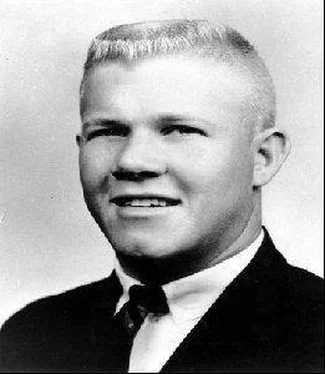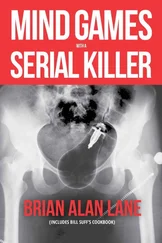Although his dean gave him a very poor assessment, Swango still managed to get a surgical internship at Ohio State University Medical Center in 1983, and soon rose to a placement in neurosurgery. While he worked at the Rhodes Hall wing, nurses began observing that genuinely healthy patients began dying inexplicably with alarming regularity each time Dr. Swango was the intern on the floor. One nurse caught him injecting medicine (or not medicine) into a patient who later became peculiarly sick. The nurses reported their unease to administrators, but were accused of being paranoid. Swango was cleared by a quick investigation in 1984.
While at Ohio State University Medical Center, part of Swango’s residency included a one-month rotation at Columbus Children's Hospital. There were sufficient suspicions at this point that he was required to have someone else with him at all times while at the Children's Hospital. Nurses were instructed not to call him even if he was listed as the doctor on call, and he was not appointed to a position as physician once his internship ended in June of 1984.
In July of 1984, Swango went back to Quincy College and started working as an Emergency Medical Technician (EMT) with the Adams County Ambulance Corps even though he had been dismissed from another ambulance service for making a heart patient drive himself to the hospital. It did not take long for other paramedics on staff to begin noticing that every time Swango made the coffee or brought food, several of them would become brutally ill for no apparent reason. Just three months later, Swango was arrested by the Quincy Police Department and arsenic and other poisons were discovered in his custody. He was convicted on August 23, 1985, of aggravated battery for poisoning co-workers, and subsequently sentenced to five years in prison. Franklin County, Ohio prosecutors also considered charges of murder and attempted murder against Swango, but decided against it for lack of physical evidence.
In 1989, Swango was released from prison. He found work as a counselor at the Ohio State Career Development Center in Newport News, Virginia. He was forced out, however, after being caught working on a scrapbook of disasters on work time. He then landed a job as a laboratory technician for ATI Coal in Newport News, Virginia, now Vanguard Energy, a division of CITA Logistics. During his time there, several employees required medical attention, complaining of unrelenting and increasing stomach pains.
About the same time, the good doctor (or not) met Kristin Kinney, a nurse at Riverside Hospital. Swango and Kinney fell in love, and planned to marry and settle down. Swango was employed as a lab technician until 1991, when he quit his position to look for a new position as a doctor. After he quit his job, the FBI commenced an investigation, questioning employees on several occasions, though Swango wasn’t aware of it at the time.
In the same year, Swango legally changed his name to Daniel J. Adams, and applied for a residency program at Ohio Valley Medical Center in Wheeling, West Virginia. He wasn’t successful; however, in July of 1992 he began working at Sanford USD Medical Center in Sioux Falls. In both applications, he forged several legal documents, including an actuality sheet from the Illinois Department of Corrections that falsified his criminal record. The sheet he submitted declared that he had been convicted of a misdemeanor after he’d gotten into a struggle with a co-worker, receiving six months in prison rather five years for the felony charge of poisoning that he served.
This was a very significant omission on his part, knowing very well that most states won’t award a medical license to a convicted felon as they consider a felony conviction to be confirmation of unprofessional behavior. He forged a ‘Restoration of Civil Rights’ letter from then Governor Gerald L. Baliles of Virginia, stating that Baliles had reinstated Swango's right to vote and serve on a jury – based on reports from friends and colleagues that Swango had committed no additional crimes after his misdemeanor, and that he was leading a commendable lifestyle.
Swango established a genuine position at Sanford, but in October made the blunder of attempting to join the American Medical Association (AMA). The AMA did a more methodical background check than the medical center and found out about the poisoning conviction. That Thanksgiving day, The Discovery Channel aired an episode of Justice Files that included a segment on Swango. In the course of the AMA report and phone calls from terrified colleagues, Sanford Medical Center fired Swango.
Author’s Note: Would this stop Swango or whatever his name was? Not likely.
The AMA quickly lost track of Swango as he’d managed to find a job in the Psychiatric Residency Program at the Stony Brook School of Medicine. His first rotation was in the Internal Medicine Department at the Veteran Affairs Medical Center in Northport, New York. Once again, his patients began dying for no reason, and four months later his wife, Kinney, committed suicide. Sharon Cooper, Kinney’s mom, was dismayed to find out a person with Swango's history could be permitted to practice medicine. She contacted a friend of Kinney's who was a nurse at Sanford. The nurse advised Sanford's Dean, Robert Talley, about Swango's whereabouts. Talley then telephoned Jordan Cohen, the dean at Stony Brook. Under extreme questioning from Alan Miller, the head of Stony Brook's Psychiatry department, Swango admitted that he had lied about his poisoning conviction in Illinois, and he was fired on the spot. The ensuing public outcry resulted in Cohen and Miller being forced to quit as well before the year was out. Before he resigned, however, Cohen, with knowledge about the past mistakes of other medical facilities, sent a warning about Swango to all the one hundred and twenty-five medical schools, and the one thousand teaching hospitals across the U.S, successfully disenabling Swango from receiving a medical residency anywhere in the United States of America.
Since the incidents at the Veteran Affair’s facility, federal authorities had gotten involved. Swango dropped out of sight until June of 1994, at which point the FBI discovered he was living in Atlanta, Georgia, working as a chemist at a computer equipment company's wastewater facility. The FBI notified the company and Swango was fired for lying on his job application. The FBI then obtained a warrant charging Swango with using falsified credentials to achieve entry to the Veteran Affair’s Hospital.
By the time the warrant was executed, however, Swango had fled to Zimbabwe. There, he got a job at Mnene Lutheran Mission Hospital in the centre of the country, again based on phony documents, and again his patients began dying without explanation. As the Medical Director, Dr. Zishiri, had suspicions, Swango was suspended, but because the hospital was unable to complete satisfactory autopsies, no solid conclusions could be drawn to press charges. During his deferment, Swango hired a prominent lawyer by the name of David Coltart to facilitate him in returning to clinical practice. He also appealed to the authorities at Mpilo Hospital, Bulawayo, to permit him in the interim to continue working there voluntarily. This was opposed, however, by Dr. Abdollah Mesbah, a surgical resident, who had frequently found Swango snooping around on the wards and in ICU even when not on call. He’d suspected that some unexpected deaths could have been related to Swango, but he’d had no proof at that point.
Swango rented a room from a widow in Bulawayo who became ferociously sick after Swango prepared a meal for her and a friend. The woman consulted a local surgeon, Dr. Michael Cotton, who suspected arsenic poisoning and convinced her to send hair samples for forensic analysis to Pretoria. In due course, these clippings established toxic levels of arsenic in the hair. The lab reports were passed on by the Zimbabwe Central Intelligence Division, then through Interpol, and on to the FBI, who then visited Zimbabwe to interview Dr. Cotton, and the Pathologist in Bulawayo, Dr. Stanford Mathe.
Читать дальше












